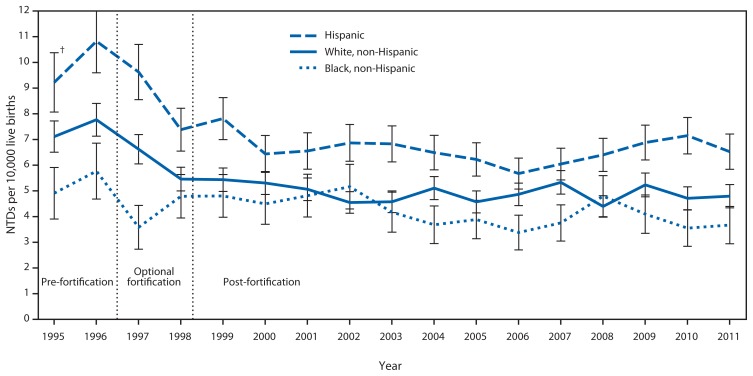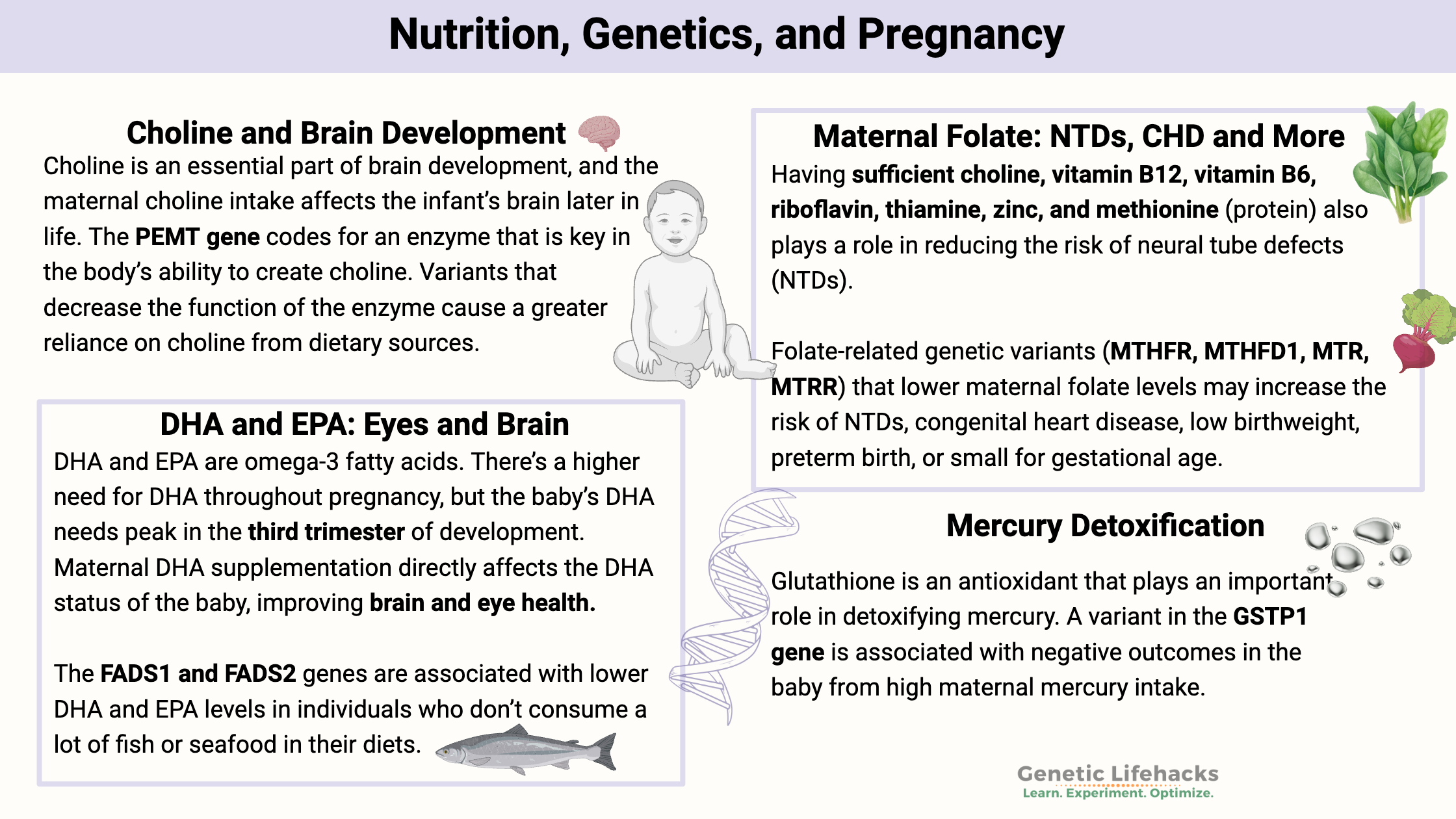Key takeaways:
~Nutrigenomics – nutrition combined with genetics – is important in pregnancy.
~ Genetic variants affect how mothers process essential nutrients like choline, folate, and DHA/EPA, and this can potentially affect the baby’s development.
~ Environmental factors, including mercury exposure and iron levels, can also interact with genetics.
Nutrigenomics and Pregnancy:
A mother’s diet during pregnancy is fundamental to the development of her baby. During pregnancy, there is an increased need for vitamins, choline, folate, DHA, and overall nutrients.[ref]
This article covers some of the known genetic interactions between the mother’s genetic variants and her diet, and shows the effects on the child. You can use this information to understand which nutrients are most important for you to ensure that you have adequate coverage.
However, it is also important to know that excessive supplementation, even of water-soluble vitamins, could have negative effects on the developing fetus.
Pregnancy is not the time to go overboard with supplements or major dietary changes. Talk with your doctor for any medical advice, and please take into consideration the RDA for pregnant women when considering supplements in addition to your dietary intake.
Below you will find seven sections that explain specific nutrient and toxin interactions with genetic variants. I’ll close with some interesting studies on environmental factors in pregnancy.
Choline: Brain Development and More
Choline is an essential nutrient for the developing fetus, used for the development of cell membranes and neurons, and as an alternative source of methyl groups to folate. Interestingly, the placenta stores a large amount of choline so that it can be easily delivered to the growing baby.[ref]
Synthesizing choline vs. dietary choline:
The liver can synthesize choline, and we get choline from our diets (eggs, meat, seafood, spinach, and beets are good sources). During pregnancy, the body’s production of choline is increased and transported to the developing baby, often leaving the mother deficient. Thus, during pregnancy, more choline is needed from dietary sources to supplement what the body is able to synthesize. Despite the increased production of choline, pregnant women end up low in choline because it is preferentially transported to the developing baby. Breast milk is also high in choline, so breastfeeding the baby also depletes the mother of choline.[ref][ref]
A US national survey showed that over 90% of the adult population doesn’t meet the Adequate Intake (AI) recommendations for choline. The AI is 550 mg/day for men and 425 mg/day for women who aren’t pregnant. During pregnancy and lactation, the AI increases to 550 mg of choline per day.[ref].
Choline in the methylation cycle:
Doctors and researchers first realized that adequate folate reduced the incidence of neural tube defects such as spina bifida. Folic acid fortification of cereals, bread, pasta, white rice, and tortillas was implemented in many countries. This fortification of processed foods reduced the rate of neural tube defects by increasing the folic acid intake of women before pregnancy (along with everyone else in the country). The nationwide fortification of grains with folic acid was estimated to prevent 1,000 cases of neural tube defects in the years after it was implemented, but a CDC study showed that there were still about 3,000 babies born with neural tube defects each year, even with the mandated fortification.[ref]

Access this content:
An active subscription is required to access this content.
Related articles and topics:
Histamine Intolerance: Genetic Report, Supplements, and Real Solutions

